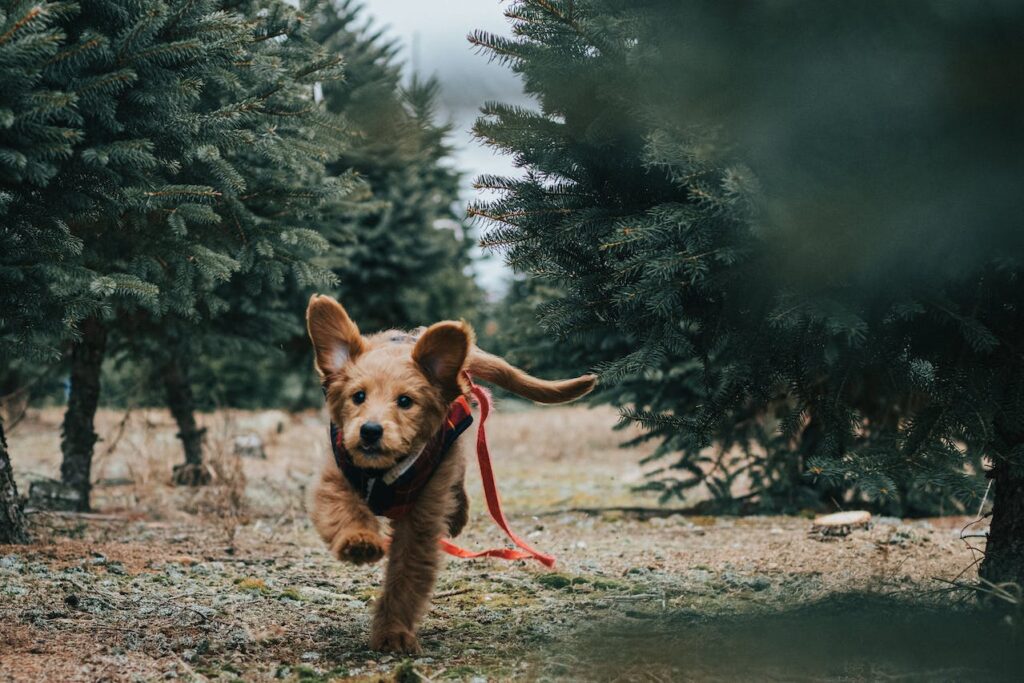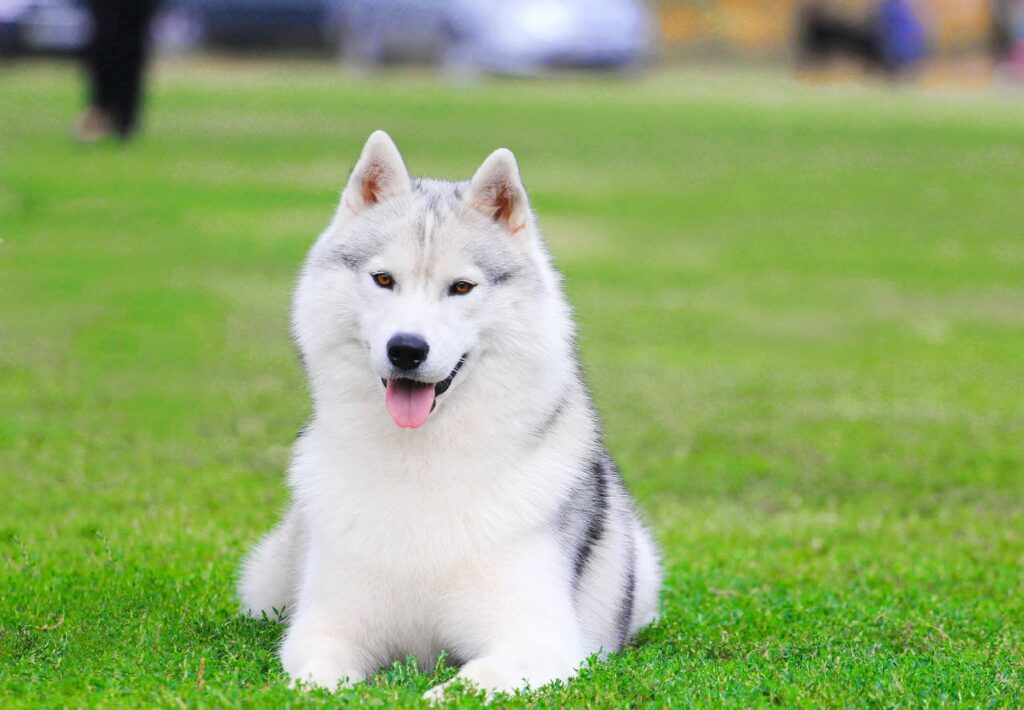Nurturing Good Habits: Essential Steps for Effective Puppy Training
Welcoming a new puppy into your home is an exciting journey filled with joy and occasional challenges. At the heart of this journey lies the crucial process of puppy training – a path that shapes the future of your furry companion. For Perth-based puppy owners, understanding and implementing effective training techniques is not just a responsibility; it’s a way to ensure a harmonious relationship between you and your new pet.
In the vibrant, diverse communities of Perth, where outdoor activities and pet-friendly spaces abound, having a well-trained puppy makes every excursion more enjoyable and stress-free. Whether it’s a sunny day at Cottesloe Beach or a family outing to Kings Park, a trained puppy means less worry and more shared moments of happiness.
This blog post is dedicated to you, the puppy owners of Perth, who are embarking on the rewarding journey of puppy training. It’s more than just teaching basic dog training methods; it’s about nurturing a well-behaved, sociable, and happy canine member of your family. With a focus on practical, easy-to-follow steps and local insights, we aim to guide you through basic puppy training tips to help you begin training today. From understanding where to start with your puppy training to mastering house training, we’ve got you covered.

Getting Started with Puppy Training
Puppy Training Essentials
Embarking on the journey of puppy training can be overwhelming, especially when it comes to house training – a vital part of your puppy’s early education. A great starting point is understanding how to use puppy training pads. These pads are a practical tool for managing accidents inside the house and are especially useful for pet owners living in apartments or homes without immediate outdoor access.
Puppy training pads are designed to absorb moisture and control odour, making them an excellent temporary solution for toilet training. To use them effectively, place the pads in a consistent spot in your home, ideally where your puppy has already had accidents or in a designated ‘toilet area’. Encourage your puppy to use the pad by gently guiding them to the pad when they show signs of needing to relieve themselves, such as sniffing or circling. Remember, patience and positive reinforcement are key. Praise your puppy or offer a treat each time they successfully use the pad. This will reinforce good behaviour and make training more efficient.
Time Frame for Training
One of the most common questions new puppy owners ask is “How long does toilet training a puppy take?” It’s important to set realistic expectations. On average, it can take four to six months for a puppy to be fully house-trained, but some puppies may take up to a year. Factors like puppy breed, size, and learning speed play a role. Smaller breeds, for instance, have smaller bladders and may require more frequent trips outside.
Consistency is key in this process. Establish a routine for your puppy, including regular feeding times and frequent bathroom breaks. The more consistent you are with your routine, the quicker your puppy will learn. Additionally, understanding your puppy’s individual signals for needing to go outside is crucial to the housebreaking process.
Customising Training for Your Puppy
Every puppy is unique, with its own personality and learning style. Customising your training approach to suit your puppy’s individual needs can significantly enhance the training experience. Some puppies may respond well to vocal commands and gestures, while others may be more food-motivated or require a softer approach.
Observe your puppy’s reactions during different training sessions. If your puppy seems disinterested or stressed, it might be time to adjust your methods. For instance, if your puppy is highly active, incorporating training into playtime can be effective. On the other hand, for more sensitive puppies, gentle encouragement and a calm environment will be more beneficial.
Remember, the goal of puppy training, especially in the early stages, is to build a strong foundation of trust and communication between you and your pet. By understanding and respecting your puppy’s personality and learning style, you can create a more enjoyable and successful training experience for both of you.
Essential Training Steps
Basic Commands and Techniques
One of the first questions new puppy owners often ask is, “where do I start?” The answer lies in mastering basic commands and techniques, which form the foundation of any successful training program. These basic commands include ‘sit’, ‘stay’, ‘come’, ‘down’, and ‘heel’. Teaching these commands not only instils discipline but also enhances the safety of your puppy in various situations.
- Sit: This is often the easiest command to teach. Hold a treat close to your puppy’s nose and move your hand up, allowing their head to follow the treat and causing their bottom to lower. Once they’re in the sitting position, say “sit”, give them the treat, and share affection.
- Stay: This command requires your puppy to have mastered ‘sit’. First, ask your puppy to ‘sit’. Then, open the palm of your hand in front of you, say “stay” and take a few steps back. Reward them with a treat and affection if they stay.
- Come: This command helps keep your puppy out of trouble and is vital for their safety. Put a leash and collar on your puppy. Get down to their level and say “come” while gently pulling on the leash. When they get to you, reward them with affection and a treat.
- Down: This is one of the more challenging commands because it puts your puppy in a submissive posture. Hold a treat in your closed hand and hold your hand up to your puppy’s snout. When they sniff it, move your hand to the floor, so they follow. Then slide your hand along the ground in front of them to encourage their body to follow their head. Once they’re in the down position, say “down”, give them the treat, and share affection.
- Heel: This command is essential for controlled walking. Start with your puppy standing on your left side. Hold a treat in your left hand above your puppy’s nose and say “heel”. Walk forward. When your puppy walks alongside you, reward them with a treat.
House Training in Detail
Effective house training is a critical component of puppy training. As mentioned earlier, puppy training pads can be a useful tool, especially in the initial stages. Remember to gradually move these pads closer to the door, and then outside, as your puppy learns. Consistency in feeding schedules and potty breaks is also crucial. Take your puppy outside first thing in the morning, after meals, and before bedtime. Always praise your puppy lavishly for doing their business outside, reinforcing positive behaviour.
Socialisation and Interaction
Socialisation is a vital part of puppy training. Exposing your puppy to different people, animals, environments, and experiences helps them become a well-adjusted adult dog. The ideal time for socialisation is between three and twelve weeks of age, however, it also needs to align with when puppies have had all their vaccinations.
Take your puppy to safe, controlled environments where they can interact with other dogs and people. This could include puppy training classes, parks, or visits to friends’ homes. Always monitor these interactions closely and ensure they are positive experiences for your puppy. Remember, the goal of socialisation is not only to introduce your puppy to new experiences but also to teach them how to behave in various situations and to build their confidence.
By focusing on these essential training steps, you lay the groundwork for a well-behaved, sociable, and confident puppy. These skills are crucial for their development and will ensure that your canine companion can fully enjoy themselves in a public setting.
Training Schedules and Treats
Daily Training Routines
Another common question that is typically asked revolves around the amount of training that’s recommended for puppies at any given time. The answer depends on your puppy’s age, breed, and energy levels, but there are general guidelines you can follow. Puppies have short attention spans, so training sessions should be brief but frequent. For puppies under five months, three to five short training sessions daily, each lasting five to ten minutes, are usually effective and manageable. As your puppy grows and their attention span increases, you can gradually lengthen the training sessions.
It’s important to remember that training isn’t just about dedicated sessions; it’s an ongoing process. Your interactions with your puppy throughout the day provide numerous opportunities for reinforcing good behaviour and manners. Consistency is key. Whether it’s during playtime, mealtime, or walks, every moment can be a training opportunity.
Additionally, it’s crucial to balance training with plenty of rest. Puppies need more sleep than adult dogs. Ensure your puppy has a quiet, comfortable place to rest and recharge after training sessions.
Effective Reward Systems
When it comes to training, rewards are essential for positive reinforcement. But what treats to give a puppy for training? The best treats are small, healthy, and something your puppy loves. They should be small enough to be eaten quickly and not distract from the training session. Many dog treat brands offer training-specific treats that are small in size and low in calories.
Some healthy options include small pieces of cooked chicken, turkey, or low-fat cheese. You can also find a variety of commercially prepared puppy treats that are made specifically for training. These treats are typically softer and easier to chew, making them ideal for younger puppies.
However, treats aren’t the only form of reward. Affection, praise, and playtime are also powerful ways to reinforce positive behaviour. Some puppies may be more motivated by a quick game with a favourite toy or enthusiastic praise than a treat. It’s important to find what best motivates your puppy and use that as a reward during training.
Incorporating a variety of rewards keeps training interesting and engaging for your puppy. Rotate between different types of treats and other forms of reward to find the best combination that keeps your puppy focused and eager to learn.
Challenges and Solutions in Training
Addressing Common Training Challenges
Training a puppy is a rewarding journey, but it’s not without its challenges. Here, we address some typical issues encountered during puppy training and provide practical solutions.
- Biting and Nipping: Puppies explore the world with their mouths, but it’s important to teach them not to bite people. When your puppy bites, emit a clear, firm “no” or yelp to indicate that it hurts, and then substitute a chew toy. Consistently redirecting this behaviour teaches your puppy what is acceptable to bite.
- Jumping Up: Puppies may jump up to greet people because they want attention. When your puppy jumps up, turn away and ignore them until they settle down. Once they are calm and have all four paws on the ground, give them attention. This teaches them that jumping up won’t get them what they want.
- Excessive Barking: Determine the cause of the barking. If it’s due to excitement or seeking attention, redirect this energy into a more productive behaviour, like sitting or lying down. Consistently rewarding quiet behaviour and ignoring the barking can be effective.
- Toilet Training Accidents: Accidents are a normal part of house training. When they happen, it’s important not to scold your puppy. Clean up the accident thoroughly to remove the odour and continue with your regular toilet training routine. Consistency and patience are key.
- Leash Pulling: If your puppy pulls on the leash during walks, stop walking and stand still until the leash relaxes. You can also change direction so that your puppy has to follow you. Reward them when they walk nicely without pulling.
Behaviour Correction Strategies
Effectively correcting unwanted behaviours is crucial in puppy training. The goal is to guide your puppy towards positive behaviour choices.
- Positive Reinforcement: Always focus on reinforcing good behaviour rather than punishing bad behaviour. Reward your puppy with treats, praise, or playtime when they display good behaviour.
- Redirection: Redirecting your puppy’s attention from an undesirable behaviour to a desirable one is a powerful tool. For example, if they’re chewing on furniture, offer them a chew toy instead.
- Consistency: Consistency in your responses to certain behaviours is key. Ensure all family members react in the same way to your puppy’s behaviour to avoid confusion.
- Time-Outs: If your puppy gets overly excited or is behaving badly, a time-out can be effective. This doesn’t mean scolding or isolation in a scary place, but rather a quiet, safe space where they can calm down.
- Professional Help: If certain behaviours persist despite your best efforts, consider seeking help from a professional dog trainer. Sometimes, an expert perspective can make a significant difference. The team at Allbreeds is here to provide expertise backed by decades of success in the Perth area.
By understanding these common challenges and employing effective behaviour correction strategies, you can navigate the ups and downs of puppy training with greater ease and success.
Investing in Your Puppy’s Future
Cost of Training
One of the practical considerations for new puppy owners in Perth is understanding the financial investment involved in training. The question “how much is puppy training?” can have varied answers, depending on the type of training you choose.
Remember, while there is a cost associated with training, it is an investment in your puppy’s future. The right training can set the foundation for a well-behaved, happy dog and can save you from potential costs associated with untrained behaviour problems.
Long-Term Benefits of Training
The benefits of investing in puppy training extend far beyond the initial cost and effort. Consistent obedience training also lays the foundation for a lifetime of positive behaviour and a strong bond between you and your pet. Here are some of the long-term benefits:
- Improved Safety: Training teaches your puppy to respond to commands, which can prevent dangerous situations. A well-trained dog is less likely to run off or get into harmful situations.
- Social Compatibility: A trained puppy is likelier to be well-behaved around other dogs and people, making social interactions more enjoyable and less stressful.
- Reduced Behavioral Problems: Early training can prevent or mitigate common behavioural issues like excessive barking, chewing, or aggression.
- Enhanced Bond: Training your puppy strengthens your bond. It builds trust and understanding between you and your pet, enriching your relationship.
- Peace of Mind: Knowing that your dog is well-trained provides peace of mind, especially when taking them out in public places or when they’re interacting with children and other pets.
- Community Benefits: Well-trained dogs contribute to a more harmonious community. They are less likely to cause disturbances or be involved in incidents with other pets or people.
Wrapping Up
Now, as you stand at the beginning of your training journey with your puppy, we encourage you to embrace this opportunity with enthusiasm and patience. Remember, the time and effort you invest in training your puppy will reap rewards for years to come. It’s not just about teaching commands; it’s about nurturing a well-behaved, sociable, and happy companion who will bring endless joy to your life.
For those in Perth, there are numerous resources available to assist you in this journey. The team at Allbreeds provides excellent puppy training expertise, helping to guide new dog owners and ensure that puppies learn advanced commands from a young age.
Embarking on the journey of puppy training is one of the most rewarding experiences a dog owner can have. It’s an investment in your puppy’s future, ensuring they grow into a well-adjusted, well-behaved member of your family and the wider Perth community. So, take the first step today, and enjoy the journey of growing and learning together with your puppy.



